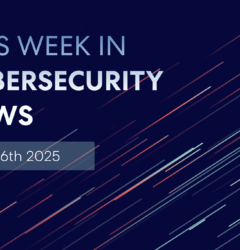You’ve seen the claim before: “We don’t use your data for AI training.” Sounds reassuring, right? But here’s the catch—just because your data isn’t used to train models doesn’t mean it’s not stored, accessed, or even exposed in ways you didn’t expect.
Think about it. If AI tools log your inputs, can employees read them? If data is stored, how long does it stick around? And if there’s a breach or legal request, could your company’s sensitive information be retrieved?
In this post, we’ll unpack what really happens to your data, where the biggest risks hide, and how to protect you from unexpected exposure.
The Fine Print Matters
AI providers love to make big promises—“We don’t train on your data!”—but that’s only part of the story. Even if an AI model isn’t learning from your inputs, your data can still be stored, logged, or accessed in ways that create security risks.
Take a closer look at the fine print. Many vendors retain user inputs for:
• Monitoring – Logs may be stored and manually reviewed to detect misuse.
• Compliance and auditing – AI providers may need to keep records for regulatory reasons.
• Service improvements – Some models use past interactions to tweak responses or flag issues.
If your data exists somewhere, it’s potentially accessible—whether by employees, third parties, or even in the event of a data breach. Just because AI isn’t “training” on it doesn’t mean it’s safe.
So, what exactly happens to your data once you submit it? Let’s break it down.
Common Confidentiality Risks with AI platforms
Even if an AI provider isn’t training on your data, that doesn’t mean it’s safe. Your inputs can still be stored, accessed, or even leaked in ways you didn’t anticipate. Here’s where the biggest risks hide:
1. Data Storage and Retention
No training doesn’t mean no storage. Before trusting an AI tool, ask:
• Where is the data stored, and for how long? Some providers keep logs for weeks—or indefinitely.
• Is the data encrypted? If not, it’s at risk of interception.
• Who has access? Employees? Third-party vendors? The more hands in the pot, the higher the risk.
If you don’t know the answers, you’re trusting someone else to protect your sensitive data.
2. Indirect Data Exposure
Even if AI doesn’t store your data, it can still resurface in ways you don’t expect.
• Session carryover: AI remembers context within a conversation. Could your previous inputs reappear when they shouldn’t?
• Response contamination: If AI pulls from past interactions, could it leak sensitive details in a later response?
• Multi-user risks: Does the provider isolate user sessions? If not, your company’s inputs might influence another customer’s results.
When data lingers—even temporarily—it creates risk.
3. Who Has Access to Your Data?
Your data may not be public, but who inside the AI provider can see it?
• Human reviewers: Some AI companies manually check logs for abuse detection.
• Support teams: Can they pull up past interactions?
• Analytics and audits: Could internal teams extract stored inputs for analysis?
Even without a breach, internal access can be a risk. If logs exist, someone can access them.
4. Compliance & Legal Exposure
If your data is stored, it’s also vulnerable to:
• Breach risks – If the provider is hacked, your inputs are at risk.
• Regulatory violations – GDPR, SOC 2, and ISO 27001 etc. have strict data handling, deletion, retention and notification policies.
• Legal requests – If law enforcement or courts demand records, will your data be handed over?
Once your data is in someone else’s hands, you lose control over how it’s used.
Next, let’s talk about how to lock it down.
How to Reduce AI Risks?
Now that you know where AI confidentiality risks hide, how do you protect your data? The key is minimizing exposure, enforcing internal controls, and demanding vendor transparency. Here’s how.
1. Minimize Data Exposure
Your best defense? Don’t let sensitive data reach AI in the first place.
✔ Sanitize inputs before submission. Strip out confidential details before sending prompts to AI tools.
✔ Use on-premises or private AI models for high-risk data—don’t rely on public AI for sensitive business information.
✔ Assume all interactions are logged unless the vendor proves otherwise. If you wouldn’t want it stored, don’t input it.
2. Strengthen Internal Controls
Even if an AI provider is secure, how your company uses it matters.
✔ Block sensitive data at the input level. Use automated filters to prevent employees from entering confidential details.
✔ Enforce role-based access controls. Limit AI use to employees who actually need it—don’t let just anyone submit sensitive data.
✔ Define clear AI usage policies. Educate teams on what’s safe to input and what should stay out of AI systems.
3. Demand Vendor Transparency
Not all AI providers handle data the same way. Make them prove they’re secure.
✔ Ask about data retention policies. How long do they keep logs, and can you opt out?
✔ Clarify employee access controls. Who, if anyone, can see user inputs?
✔ Verify encryption standards. Is data encrypted both in transit and at rest? If not, that’s a red flag.
Data privacy in AI isn’t about trust—it’s about verification. If a vendor can’t clearly explain how they protect your data, assume they don’t.
If your data can be stored, accessed, or retrieved, it’s not truly private. So, it’s super important to do a throughout vendor review with every AI provider you’re using and really understand if the return is worth the cost and how much exactly are you paying to them in data.
